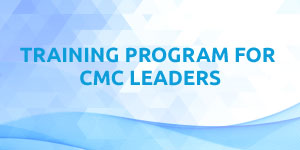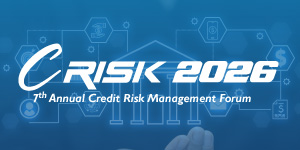Free knowledge to monitor the world of events. Have a look at our must read Blogs on Pharma, Finance, HR, Health and Cross Industry.
Leachables and Extractables
2022-08-16
Leachables and Extractables: A Comprehensive Guide
Given its commitment to ensuring consumer safety, the European market has always placed a high priority on comprehending and regulating substances that may be hazardous in products. The subject of leachables and extractables is one that frequently piques people's interest. These expressions may seem complex, but they have a wide range of implications, especially for sectors like pharmaceuticals, medical technology, and food packaging. To enhance our comprehension and delight, let's go into more detail about this significant problem.

Defining Leachables and Extractables
Extractables are components that can be removed from a product, especially after vigorous solvent treatment. Extractables are compounds that could leak out, for instance, when a container or medical equipment is exposed to solvents.
Leachables are compounds that, under normal conditions, move from a container or product into the environment nearby or into the product it contains. Leachables, for instance, are substances that slowly seep from a medicine container into a drug solution.
Why are they Important?
Leachables and extractables have a substantial impact on a product's quality and safety:
- Patient Safety: In the pharmaceutical industry, an unanticipated leakable could lead to adverse reactions in patients.
- Product Integrity: These compounds may change a product's stability or efficacy.
- Regulatory Compliance: European law requires enterprises to identify and control specific substances in order to ensure consumer safety.
The European Perspective
The European Union (EU) has always been in the forefront of establishing stringent regulations to protect consumer safety. Specific recommendations, such as those made by the European Medicines Agency (EMA), call for the identification and measurement of extractables and leachables in pharmaceutical formulations.
Similar to this, safety against the transfer of chemicals from packaging materials to food is a major focus of EU regulations on food contact materials, such as Framework Regulation (EC) No. 1935/2004 of the European Commission.
Industry Implications
Pharmaceuticals: The EMA has rules about the types and amounts of testing required. Notably, these tests examine the entire procedure rather than just the final result, from selecting the raw ingredients through manufacturing the final packaging.
Food and Beverages: The possibility that potentially hazardous compounds could seep into food from packaging is very worrying. The EU has established maximum limitations for many potential immigrants in order to guarantee food safety.
Medical devices: Because they come into contact with patients directly, the EU has tight regulations for them. In force since May 2021, the new Medical Device Regulation (MDR) 2017/745 provides a more reliable framework for ensuring patient safety.
Testing for Leachables and Extractables
Several standardized testing methods have been developed in the EU:
Chemical Characterization: Labs can detect and measure these substances using methods like Gas Chromatography-Mass Spectrometry (GC-MS) and Liquid Chromatography-Mass Spectrometry (LC-MS).
Biological Evaluation: The identified compounds are subjected to biological testing to determine their possible influence on human health in order to comprehend the toxicological risk.
Best Practices for European Industries
Early Assessment: Businesses want to start their evaluations at the design stage. It guarantees cost effectiveness and prevents unforeseen regulatory obstacles.
Collaboration: Close collaboration with suppliers can reveal information on possible materials extractables.
Continuous Monitoring: Regular monitoring, even after the product has been sold, makes sure that any modification to the process or material doesn't result in the introduction of unexpected leachables.
The importance of leachables and extractables in ensuring consumer safety is highlighted by actual situations involving them. For instance, legal limits were put in place because Bisphenol A (BPA), which was once widely used in plastic infant bottles and food containers in Europe, was shown to seep into consumables and pose a health risk. Similar concerns were raised about DEHP, a plasticizer used in PVC medical devices, when it was discovered that it leached during procedures, leading to EU laws requiring its decrease or clear labeling. When metals like lead and nickel were found in the inhaled aerosol, e-cigarettes also came under fire, and the United States blamed vitamin E acetate for the lung damage linked to e-cigarette use. Additionally, the discovery of cancer-causing nitrosamines in some medicines prompted international recalls and tighter regulations. These instances highlight the necessity of thorough testing and regulation with regard to leachables and extractables.
Conclusion
Leachables and extractables in Europe are a complicated realm that go beyond simple regulatory checklists. It is a potent affirmation of the continent's everlasting dedication to upholding the patients' and clients' health and wellness. The actual consequences these compounds can have on public health are highlighted by recent events like the discussions surrounding BPA in plastics and DEHP in medical equipment. As technology develops new ideas and goods, it also creates new challenges about possible contaminants. As a result, in order to stay up with these innovations, European industries are involved in a never-ending dance of adaptation. It takes careful consideration, exhaustive testing, and a proactive mindset to ensure that the products that are released onto the market are both effective and secure. Maintaining Europe's legacy of greatness, where the safety of its residents is always prioritized, requires more than just keeping a reputation or fulfilling legal obligations. The EU will set the standard for safety rules and preventative measures because of its commitment to doing so and will act as a worldwide role model.
Join our upcoming Masterclass on Leachables and Extractables conducted by industry expert.
By Sasly Ahmeth, Social Media Executive & IT Support, GLC Europe, Colombo Office, Sri Lanka.
Get a feel for our events

Training Program for CMC Leaders - EU edition
27th October 2025 - 16th January 2026
Rich with practical insights and real-world applications
learn more >>
Training Program for CMC Leaders - US edition
27th October 2025 - 16th January 2026
Rich with practical insights and real-world applications
learn more >>
Mastering the Common Technical Document (CTD) for Biologics Masterclass - EU edition
12-16 January, 2026
From guidelines to submissions
learn more >>














